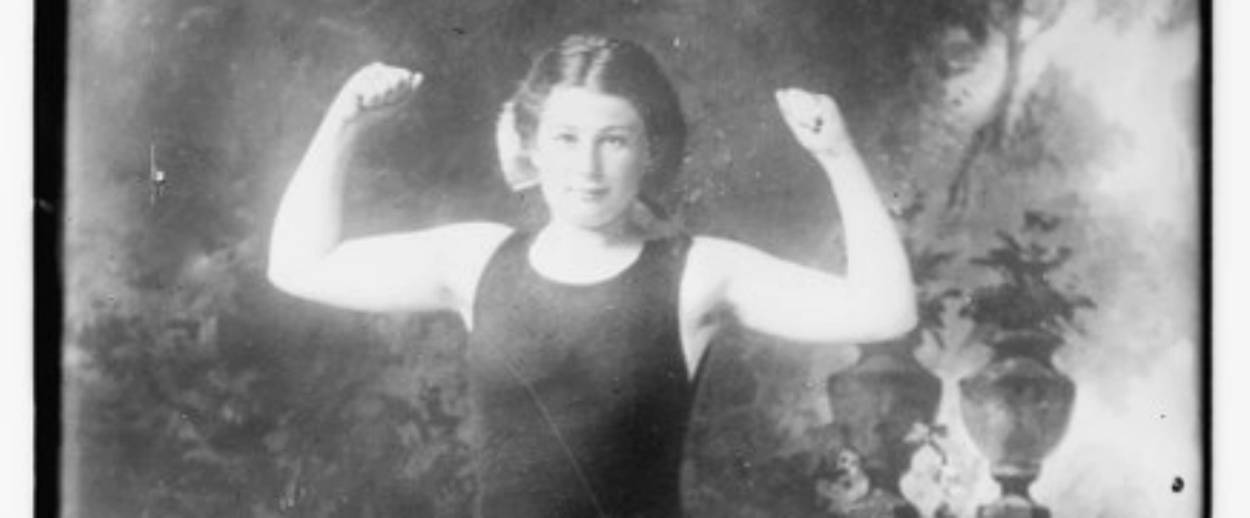Remembering Rose Pitonof: The Real Coney Island Mermaid
At age 15, Rose Pitonof made history by swimming 21 miles to reach the Coney Island Steeplechase




On Sept. 19, 1910, Rose Pitonof, age 15, swam from East 23rd Street in Manhattan to Steeplechase Pier on Coney Island. The jaunt took 5 hours and 6 minutes and covered 17 miles; Pitonof, from Dorchester, Massachusetts, was the first person to do it. The following year, she returned to the murky East River waters, swimming from the East 26th Street Pier to Coney Island. To contend with powerful currents and thrashing waves, she wound up swimming under three bridges and covering 21 miles instead of 17. It took her 8 hours and 7 minutes. In a breathless account, The New York Timesreported that a Boston lifeguard trailed Pitonof in an auxiliary boat, just in case. The paper of record noted dryly, “When near Fourteenth Street, Manhattan, Mr. McColgan dived overboard for the purpose of swimming beside the girl but suffered a cramp and had to be picked up by the boat. The girl went to his assistance, but her efforts were not needed.” Savage.
(A tip of the hat to the delightful blog Ephemeral New York, for introducing me to Ms. Pitinof’s exploits.)
Before conquering New York City’s waters, Pitonof vanquished Boston’s. At the age of 10, she swam a mile and a half across Boston Harbor in 33 minutes. At 15, six weeks before her 1910 Coney Island swim, she won the notorious 8-mile open-water Boston Light Swim, setting a new record. It took her 6 hours and 50 minutes, and she consumed only a small glass of eggnog along the way. She competed against seven men, all of whom had to quit mid-race. (The previous year, Australian swimming sensation Annette Kellermann had attempted the Boston Light Swim and failed, though she came closer to the lighthouse than any male entrant.)
After the Boston Light triumph and resulting press attention, Pitinof went into vaudeville. She did diving demonstrations and taught swimming (she favored the breaststroke) in a portable tank that her troupe toted across the country. Her image appeared on cigarette cards, the baseball cards of her day.
By 1911, everyone knew Rose Pitinof. Fifty thousand people showed up to watch her tackle Coney Island the second time. Her brother Adolf, a fellow swimmer, served as her coach (alas, he died in the great flu epidemic of 1918). When Rose emerged from the water, she was so besieged by fans, it took 10 minutes for her to walk less than 200 feet to her dressing room. “This was accomplished only by the efforts of a flying wedge of attendants, who forcibly worked their way through the human wall of thousands trying to get a glimpse of Miss Pitinof,” the Times noted. Then she indulged in a cup of coffee and a chicken sandwich.
The stocky 4-foot, 10-inch Pitinof accomplished all this in an era in which American girls, Jewish and non-Jewish alike, were discouraged from playing sports or engaging in physical activity. Scientists believed that running, swimming, and cycling could cause horrifying yet unspecified reproductive damage. Plus, of course, sports were unfeminine and caused one to dress like a whore.
The greatest tragedy before 9/11 was the 1904 General Slocum disaster, in which over a thousand women and children on a pleasure cruise up the East River died when the ship caught fire not far from shore. The captain’s incompetence, the women’s heavy woolen clothing, and the ship’s inadequate and crumbling life preservers all contributed to the tragedy … but most women and children then didn’t know how to swim. (You recall the Talmudic saying—A father has three obligations: Teach your child Torah. Teach your child to earn a living. And teach your child to swim. Sometimes the Talmud speaks in metaphors, sometimes not.) Pitinof helped to educate Americans to the fun, power and lifesaving potential of swim.
Her one regret was never successfully swimming the English Channel. That accomplishment would have to wait for Gertrude Ederle in 1926. Eventually, Pitinof retired from competition. She got married, had kids, became a swimming teacher, gave birth to two daughters (one of whom became a champion swimmer herself). and died in 1984, at age 89. Today, the annual Rose Pitonof swim, which recreates her 1911 route, commemorates her New York City feat.
Marjorie Ingall is a former columnist for Tablet, the author of Mamaleh Knows Best, and a frequent contributor to the New York Times Book Review.